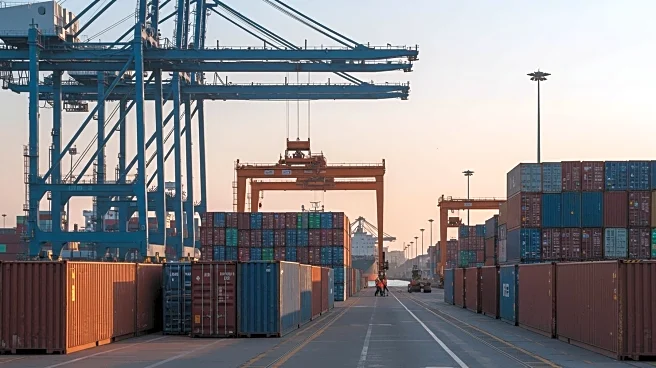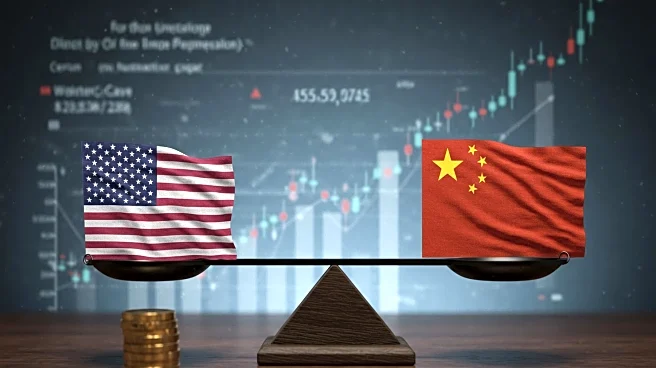What is the story about?
What's Happening?
The Port of Long Beach witnessed a significant increase in import volumes in July, setting a new record for the month. This surge was driven by importers taking advantage of a temporary pause in U.S. tariff hikes, allowing them to bring in large quantities of goods from East Asia. The port handled nearly 950,000 TEU of cargo, with imports accounting for nearly 470,000 TEU. Despite the increase in imports, export containers saw a decline of 13 percent. The surge is attributed to retailers stocking up on goods purchased at lower costs during the tariff pause, which is set to expire on November 10 unless extended.
Why It's Important?
The record import surge at the Port of Long Beach highlights the impact of trade policy on U.S. supply chains and retail strategies. Retailers are capitalizing on the temporary tariff pause to reduce costs, which could influence pricing and inventory levels in the coming months. However, the port anticipates a 10 percent decline in cargo volume in the second half of 2025 due to ongoing trade policy uncertainties. This development underscores the volatility in international trade and its effects on U.S. ports and businesses reliant on imports.
What's Next?
As the tariff pause nears its expiration, retailers may continue to increase imports to maximize cost savings. The Port of Long Beach is preparing for a potential decrease in cargo volume, which could affect operational strategies and economic forecasts. Stakeholders, including retailers and policymakers, will be closely monitoring trade negotiations and potential extensions of the tariff pause to assess future impacts on supply chains and pricing.
AI Generated Content
Do you find this article useful?











